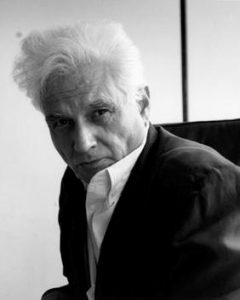This week, we have a post-it note activity that is all about collaboration between students. Morven’s Year 9 DT students considered the impact of physical disability on individuals’ lives using post-it notes to share ideas. Using post-it notes is quick in terms of teacher preparation time, but can be really impactful. Plus, the physical (rather than digital) nature of this makes the most of being back in the classroom together.
This is how Morven’s post-it collaboration worked:
- Students were on their feet in groups of 4.
- On different tables there were disability fact files.
- Each group had 2 mins to read the disability fact file on their table. They then had to jot down ideas on post-it notes of activities that their user might struggle with.
- At the end of the allocated time, they then moved onto the next table and repeated the activity.
- Each group had a different colour of post-it note.
- After groups had rotated round all tables, Morven chose one student from each team to give a brief overview of their fact file. Then as a group they evaluated all the post-it notes from across the groups and chose the three post-it notes which jumped out at them to share back to the class
- Morven took photos of the post-it notes and put them on Teams.
- Next lesson they will begin to design potential solutions for these scenarios.


Benefits
- Peer evaluation is built into the feedback process – students need to review other groups’ ideas and weigh them up.
- The pace kept students focussed and on task.
- The physical nature of the activity capitalises on being back in the physical classroom.
- Students were thinking for themselves using stimulus information.

Neurodiversity considerations for this activity from Isabelle and Catherine
Be aware of sensory sensitivities:
- Touch: Some students might find the close proximity of collaborating on the same sheet of paper difficult.
- Noise: Some students might find the group talking section of this too loud.
- Be aware that the time allocation may not suit students with different processing speeds, so ensure that thinking time is built in to make the pace manageable.
- Please be aware that it is important to set boundaries for some students who might have hyper-activity tendencies.



 Deconstruction is a theory principally put forward in around the 1970s by a French philosopher named Derrida, who was a man known for his leftist political views and apparently supremely fashionable coats. His theory essentially concerns the dismantling of our excessive loyalty to any particular idea, allowing us to see the aspects of truth that might be buried in its opposite. Derrida believed that all of our thinking was riddled with an unjustified assumption of always privileging one thing over another; critically, this privileging involves a failure to see the full merits and value of the supposedly lesser part of the equation. His thesis can be applied to many age-old questions: take men and women for example; men have systematically been privileged for centuries over women (for no sensible reason) meaning that society has often undervalued or undermined the full value of women.
Deconstruction is a theory principally put forward in around the 1970s by a French philosopher named Derrida, who was a man known for his leftist political views and apparently supremely fashionable coats. His theory essentially concerns the dismantling of our excessive loyalty to any particular idea, allowing us to see the aspects of truth that might be buried in its opposite. Derrida believed that all of our thinking was riddled with an unjustified assumption of always privileging one thing over another; critically, this privileging involves a failure to see the full merits and value of the supposedly lesser part of the equation. His thesis can be applied to many age-old questions: take men and women for example; men have systematically been privileged for centuries over women (for no sensible reason) meaning that society has often undervalued or undermined the full value of women.